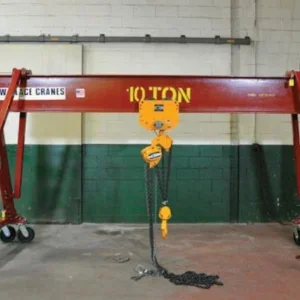What alternative strategies should be adopted to balance the extent of localization versus integrated globalization in order to succeed in these unpredictable and individually unique markets? Should they stay more local, relying more on local partners and supply chain relationships, or should they be integrated into global operations and scale? What options will be available?
One right answer?
As is so often the case in running a global business, there is no one right answer. Given the emphasis on growth and the pressure on organizations to meet financial targets, expansion into BRIC (Brazil, Russia, India, and China) and emerging markets may be inevitable. Companies taking a "one size fits all" approach to expansion, however, are setting themselves up for disappointment.
In interviews with more than 250 senior executives of Asian companies, we found that only 28 percent said their revenues and profits from international markets had fully developed in line with expectations over the past three years.
While 90 percent of expanding Asian companies who responded to the study remain strongly committed to international expansion, only 31 percent said they have the right operational capabilities to support international operations. Executives also indicated that a major concern was the "human side" of international business: securing talent, building a global mindset, and managing cross-cultural communications.
Ideally, companies operating in BRIC and emerging markets will rely upon decentralized operations, running at critical mass and tailored to the local market. They will employ global best practices when possible, with emphasis on flexibility and responsiveness over global standardization and scaled efficiency.
It’s also worth remembering that, when companies such as Panasonic, Samsung, and Toyota started their international expansions, they based their competitive advantage in large part on lower production costs. Over time, they shrugged off these low-cost origins and became known for innovation and premium products.
The same scenario is playing out today with other Asian companies as they globalize, but at a much faster pace. In our study, a majority of executives said low-cost operations were a primary driver of competitive advantage today, but only a small minority thought it would still be an advantage in three years’ time.
Major variations
The extraordinary variations among emerging market countries suggest the need for multiple supply chains, each tailored to the specific needs of regions and communities and supported by locally developed capabilities and talent. Each supply chain should be flexible enough to accommodate rapid change.
Most organizations place a high value on integrated operations, but in BRIC and emerging markets the emphasis may shift from "integrated" to "dynamic."
This means creating fluid, responsive ecosystems of processes, people, and technologies. Decentralized operations can allow companies to deal more effectively with a range of issues including cross-border challenges, differences in taxation, geographic obstacles, technological variations, and discrepancies in the labor market.
Every company, and every market, is different, so organizations must deal with the real, rather than the ideal. They need to think about each developing country as an independent ecosphere, a micro-supply chain with its own variations.
Depending upon company ambitions, the current level of investment and involvement, and the economic conditions within each particular country, organizations seeking to enter new emerging markets may find themselves at one of four stages of global localization maturity: Stage 1: Entry level/ authorized reseller. The organization at this stage has made no investment in local infrastructure. Stage 2: Direct sales. Stage 3: Operational footprint. Stage 4: Decentralized operations.
To support successful global expansion, companies need to create the right platform for each market. This means designing and implementing effective regional and global operating models.
The operating model should articulate how the company will organize itself to execute its international strategy. It can also lay the framework for coordinating operations between the company’s corporate center and its overseas business units.
First, organizations define the capabilities and identify the gaps they want to fill across operations. The operating model can also reflect the business models chosen for each of the overseas operations. Key questions for each market include:
- What unique market characteristics drive customer demand for which we need to adapt?
- What capabilities are critical to delivering our customer value proposition and achieving differentiation in target markets?
- How can we leverage our existing or shared capabilities to serve new markets?
- Where can we improve to become more competitive, with the ultimate goal of becoming a market leader?
Key concerns
Once a structural design has been created, companies need to determine how to implement each required capability. A key consideration in emerging markets is how to source and develop the right talent across geographies.
Companies can no longer rely on sourcing key talent from their home countries to drive success in foreign markets. Rather, they must have comprehensive strategies in place to build and retain talent, both at home and overseas. These strategies often rely upon global best practices, mixed in with home country traditions.
Other concerns include the degree of process standardization or customization needed, and the governance structure required to manage operations in emerging markets. In working with companies planning expansion into BRIC or emerging markets, we use a seven-point checklist to review strategy and the company’s own plans for dealing with key issues.
- Governance. In a mature operation with critical mass, the company generally relies upon local decision-making authority.
- Reliance on local talent. The company entering a new market should consider planning upon increased reliance on local hiring and local leadership.
- Local partnerships. Partners with local knowledge and experience can be critical to increasing the likelihood of success, especially in the early stages of expansion. As mentioned, the characteristics of each country will determine whether reliance on local partnerships will increase or decrease over time.
- Multipurpose infrastructure. Demand and environment in each country can be highly unpredictable. A multipurpose infrastructure including a distribution network, warehousing operations, multimode transportation, which supports "tap on tap off" capability, enabling flexibility and responsiveness, are among the key attributes of a successful emerging market operation.
- Low visibility and low touch. Companies entering emerging markets may have to accept a lower level of visibility. The risks accompanying lower visibility, however, can be actively managed through manual checkpoints and interventions.
- Reliance on manual processes and frequent touch-points. Manual processes will likely be prevalent in emerging markets from the time of entry all along the maturity curve, although generally there is the potential to leverage systems and automation in the late stages. We believe that the emphasis from the beginning should be upon the integration of people and partners rather than the integration of systems.
- Reduction of complexity without sacrificing localization. Scaled efficiency may not be attainable, but reduction of complexity across products and services is essential at every stage from entry to critical mass.
Decentralization?
Global markets are becoming crowded and complex, with many companies converging on a common strategy of trying to sell higher-value, innovative products. Organizations need fresh, effective roadmaps that reflect changing markets, customer preferences, and technological developments.
Our research indicates that companies can increase their chances for success by putting in place strategies that enable differentiation in crowded markets while providing sound platforms for growth.
No matter how clear and detailed the blueprint for expansion into emerging markets, however, the most important element of success may be a company’s ability to build an adaptable and responsive ecosystem of processes, people, and technologies. The extraordinary variations among emerging markets suggest the need for country specific operations, supported by locally developed capabilities and talent.
In the end, this will likely require decentralized operations running at critical mass, to deal more effectively with a diverse range of challenges. Most organizations place a high value on integrated operations, but in BRIC and emerging markets the emphasis may shift from "integrated" to "dynamic."






